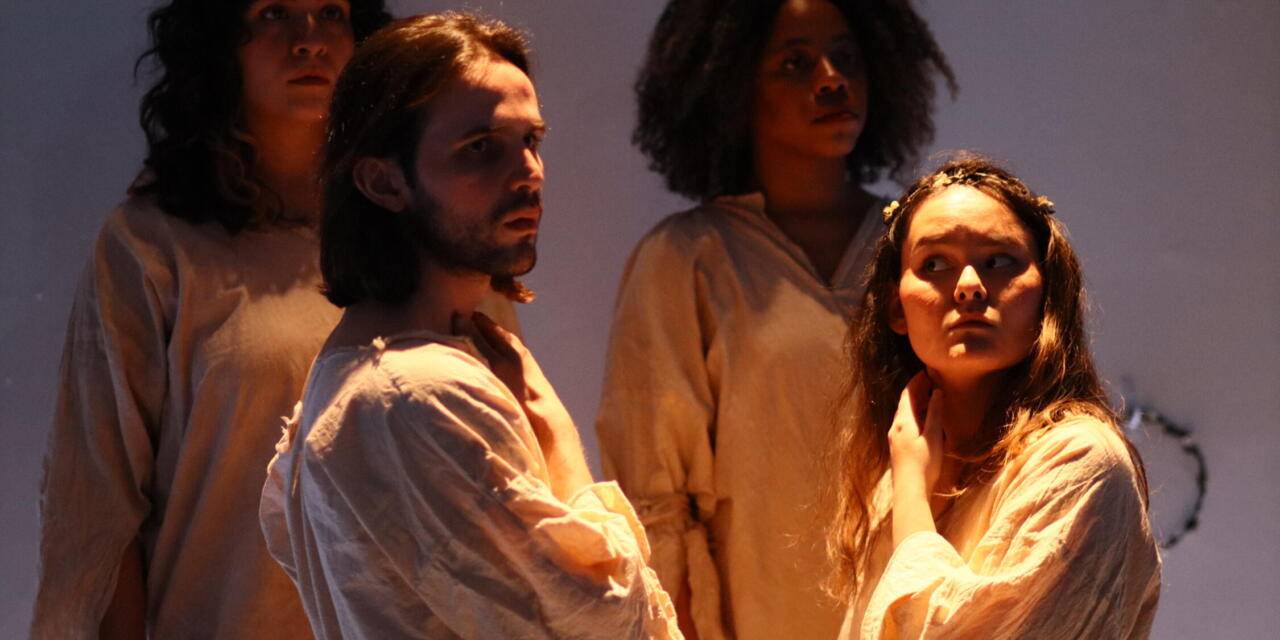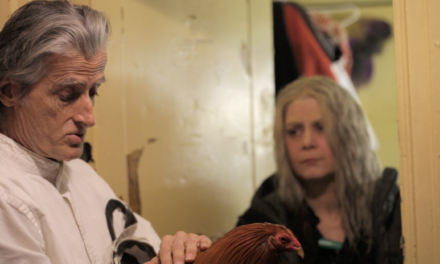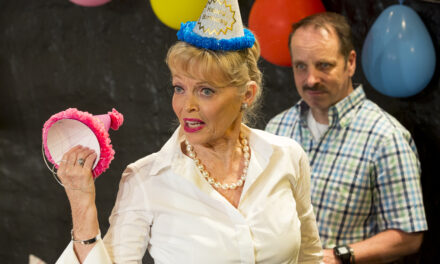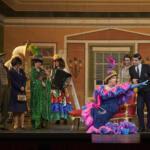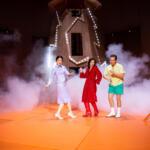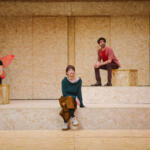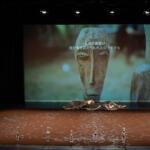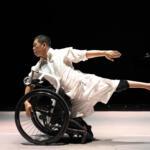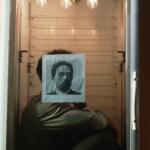I’ve long been fascinated by the concept of incorporating video game mechanics into theatrical performance. After all, as technology has advanced, the two art forms have much in common: dramatic structure, audience as empathetic turned sympathetic, exploration in the guise of entertainment. The only key difference, really, is that a game allows its player to be simultaneous writer, director, and performer; in theatre, the audience member feels as if part of the world (ideally), but is never onstage with said players.
Third Law: An Interactive Theatrical Game, devised by the performers and designers of What Will the Neighbors Say?, asks what would happen if the audience became player. What would a story gain or lose by giving the audience the writing reins (within some constraints, of course)? What if they were allowed developmental direction, and placed in the same playing space as the actors themselves?
It’s an intriguing experiment, one I was delighted to take part in this late May, hosted by Culture Lab LIC. “Intrigue” is a fine word to describe how one enters the theatre, in fact. Walking through a forest of opaque white trees to emerge in a white playing space (an effect both ethereal and asylum-reminiscent), Third Law’s audience finds themselves face-to-face with the cast. Seven stand in neutral, clad in biblical tunics, staring blankly forward. Lights of blue dance around the space. A singular golden circle is lit upon the white floor. It took a moment or two, but, finally, one brave audience member stepped into the circle, and the game was begun. Adam and Eve entered the Garden.

The playing space of “Third Law.” PC: Paris Marcel
Over the remaining 45-ish minutes, the audience utilizes the circles on the ground (appearing with numbers to indicate how many people needed to step within to prompt its action) to control music, lighting, which two performers portrayed Adam and Eve at any given time, when the first Humans would be tempted by the Serpent, and what the true ending of the show would be. Two white benches—one stage left, one stage right—would light up with “Ritual” and “Doubt:” when the former was sat on, all six were made to perform a number from Sweet Charity; when the latter was sat on, well…the end game was near.
Fascinating, awesome, slightly whimsical? Yes. However, this early phase of the experiment is not quite working the way it’s intended to. What emerges, instead of a theatrical experience, is a wonderful anthropological study. I found myself far more interested in how the audience was reacting: who was anxious? Who had favorites in the cast, and would leap for them to be the ones constantly performing? Who went to a different circle simply to be contrary? Who always wanted the Ritual, even when it interrupted the flow of the story? Who was truly paying attention, as opposed to only doing as they wished?
To be frank, I don’t recall much of the Edenic theatrical story. I’m sure it was great: major props to the actors (Shani Matoaka Bekt, Megan Mariko Boggs, Pablo Calderón-Santiago, James Clements, Sam Hood Adrain, and Melannie Vásquez Lara) for continuing in their commitment regardless of audience antics and whom they were paired with. In what I could catch of the tale, they were certainly engaging. Unfortunately, my brain was a touch too focused on the gaming task at hand, the observation of others, the jostling of the crowd to get their way, to be properly immersed in the story.
That said, I’m thrilled this exists. I can’t wait to witness its next iteration.
For more information on Third Law and WWTNS?, click here.
This post was written by the author in their personal capacity.The opinions expressed in this article are the author’s own and do not reflect the view of The Theatre Times, their staff or collaborators.
This post was written by Rhiannon Ling.
The views expressed here belong to the author and do not necessarily reflect our views and opinions.

